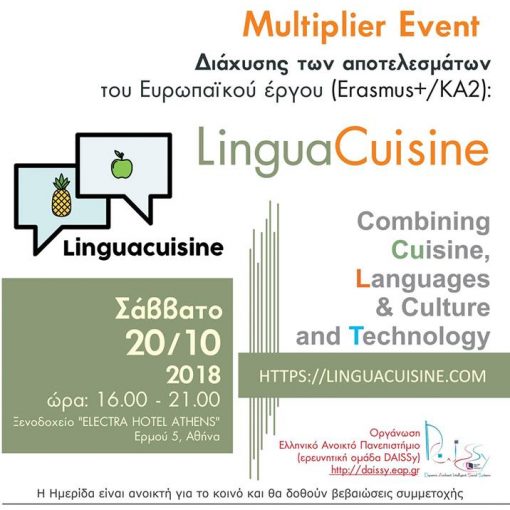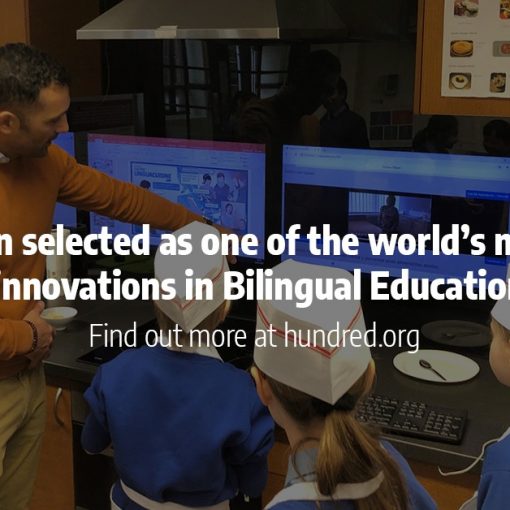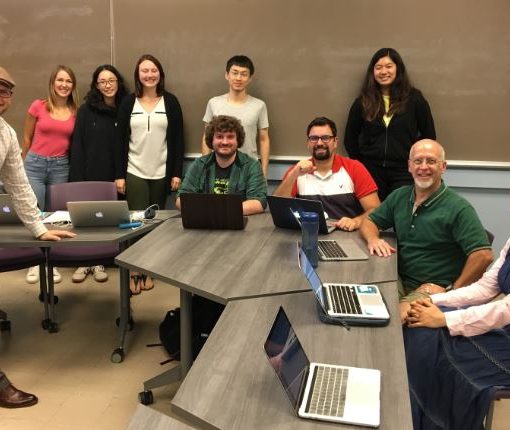The LinguaCuisine project (https://linguacuisine.com/) promotes digital literacy and learning of languages, cuisines and cultures. The project was a collaboration between Newcastle University, Action Foundation (UK), Hellenic Open University (Greece), Università degli Studi di Modena e Reggio Emilia (Italy) and the Workers’ Educational Association (UK), funded by an Erasmus+ KA2 Strategic Partnership grant.
The project produced a downloadable tablet and smartphone app (android and iphone) which enables users to be guided through cooking a recipe in six official EU languages. You can download the apps here https://linguacuisine.com/app/.
App users created an online community of practice with access to online recipes. You can join the community here https://linguacuisine.com/online-community/ and learn aspects of a foreign languages, cuisines and cultures by using the apps.
In addition, the project produced a certification system for the digital competences that community members develop. The LinguaCuisine Certification System v.1.2 (LCCS) was created by researchers of the DAISSy research group at Hellenic Open University (http://daissy.eap.gr/en/) and outlines the rules, procedures and management for carrying out certification of a specific subset of competences of the DigComp 2.1 framework. It establishes specific requirements for the process used, tools of assessment, grading and certificate awarding procedures.
Dimensions of certification
LCCS follows the structure of DigComp 2.1:
Dimension 1: Competence Areas
This dimension uses 3 out of 5 DigComp Competence areas, namely:
- Competence area 1: information and data literacy
- Competence area 2: communication and collaboration
- Competence area 3: digital content creation
Dimension 2: Competences
This dimension uses 7 out of 13 DigComp Competence descriptors for the 3 Competence Areas covered, namely:
Competence Area 1: Information and data literacy
1.1 Browsing, searching, filtering data, information and digital content
1.2 Evaluating data, information and digital content
1.3 Managing data, information and digital content
Competence Area 2: Communication and collaboration
2.1 Interacting through digital technologies
2.2 Sharing through digital technologies
2.3 Engaging in citizenship through digital technologies
Competence Area 3: Digital content creation
3.1 Developing digital content
Dimension 3: Proficiency Levels
LCCS addresses 4 out of the 8 Proficiency Levels of DigComp, namely:
Foundation level, including:
Level 1: Basic level with guidance
Level 2: Basic level with autonomy
Intermediate level, including:
Level 3: Well defined, routine tasks
Level 4: Tasks, well defined and non-routine problems
Dimension 4: Knowledge, skills and attitudes applicable to each Competence
This dimension includes skills specific to the LinguaCuisine project that are targeted to the project’s scope. The LinguaCuisine-specific skills have been designed so as to support the process of learning foreign languages, cultures and cuisines by the trainees. They are purely digital skills related both to the process of learning through the cooking sessions organized by the project and through the use of the LinguaCuisine application (the Recipe Builder).
Dimension 5: Examples of use
Examples of use are LinguaCuisine –specific.
The certification process
A significant part of the LCCS is the Framework that maps the skills to competences and to Proficiency Levels (PL). It is also used to derive appropriate certification questions that cover all basic skills at all levels. Scoring functionality is used to calculate the score of the certification and assign a trainee to a PL for each Competence under examination.
The process of mapping dimensions to each other, requires the analysis of each Competence Area into Competences. The next step is to process each Competence separately as follows: based on the descriptors of each PL, a set of HL-Skills is derived. They are used to design the first version of the questions of the certification tools. In parallel, HL-Skills and descriptors are used to derive the PL-Skills for the specific Level of Proficiency Level of the Competence. From each PL-Skill (or wherever possible, from multiple PL-Skills), the next step designs Examples of Use that are LinguaCuisine-specific. By using PL-Skills and Examples of Use, the process a) refines the questions previously designed with a goal to produce the minimum set of questions that cover most skills with the best possible quality of answers and b) design the answers for each question. Questions can be generic or LinguaCuisine-specific, with more focus on the latter. This process is repeated for every Competence.
Here is an example of applying the certification process for competence Evaluating data, information and digital content:
And the resulting questions:
Structure of the certification system
The Certification System comprises the following parts:
- LinguaCuisine Conceptualization Framework (LCCF). The framework provides a mapping between:
- The competences and the generic digital skills
- Generic digital skills and LinguaCuisine-specific examples of use (from which LinguaCuisine-specific skills are derived)
- Competences-skills and questions/answers for the two tests used for certification.
- Certification Tools: the certification tools include two tests of different type, Test I and Test II. They are designed to assess the PL of a Trainee both by way of a certification test (Test I- a multiple choose quiz of 49 questions) and by observation and rating by a tutor (Test II- observation sheet including 37 assessment tasks). Each test calculates a score for each Competence and based on a predefined range of values, the score is mapped to a PL. Both tests use the same scoring method and they are designed to complement each other.
- Grading Methodology: it provides the scoring ranges and algorithms for calculating the total score for each Competence assessed by the certification tools. The methodology meets the needs for compatibility between the two certification tools and for accurate results.
- Certificate Skills award. The Certification System awards certificates based on the Proficiency Level that was calculated for each Competence. Thus, each time a trainee is certified for a Competence, a specific set of generic and LinguaCuisine-specific skills award is produced.
Certification tools
The system uses two tests to award a PL certificate to a trainee. The PL is calculated for each Competence independently based on the results of both tests. For each Competence, the set of skills that corresponds to the PL certified, is awarded. Different PLs may be certified for different competences.
Test I
The goal of this certification tool is to provide detailed information on the Proficiency Level of the trainee by assessing a wide range of PL-Skills according to the mapping of the LCCF. It is a multiple-choice test including questions that are grouped by DigComp’s competences. Trainees can only give one answer to the multiple-choice questions. Answers are designed so as to reflect different digital PLs. A question has answers corresponding to all PLs (one for each level) plus answers that are false. Thus, by choosing a specific answer, the trainee is mapped to a PL and awarded specific points.
Test II
This is an observation test where the trainee is asked to perform simple tasks. Each task is assessed by one question. Tasks correspond to PL-skills of various PLs. The trainer observes the reaction of the trainee and assess the way that the latter executes a task. There are various ways of executing a task, organized into patterns of behaviour. These patterns are, just like the answers of the questions of Test I, mapped to each one of the 4 PLs. The trainer selects the pattern (thus, the Proficiency Level) of the behaviour (the closest one) the trainee has exhibited when executing a task and a score is assigned.





